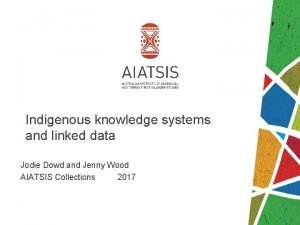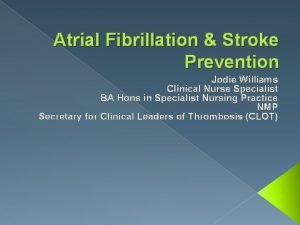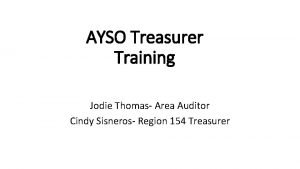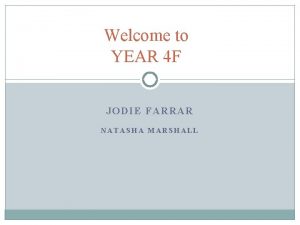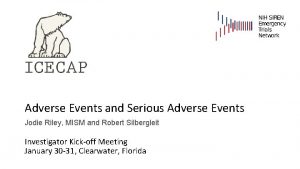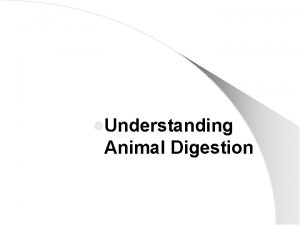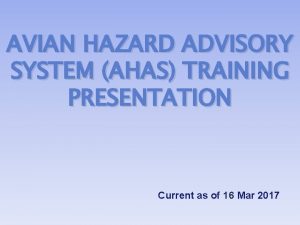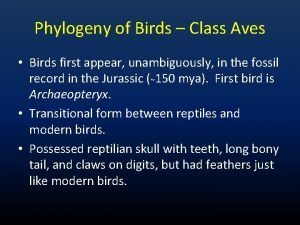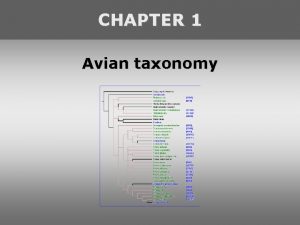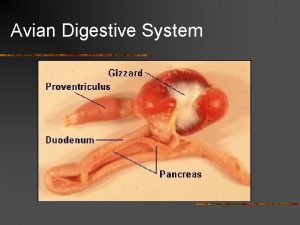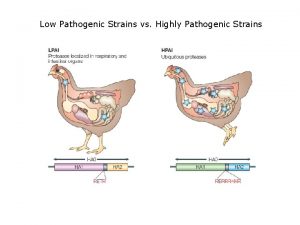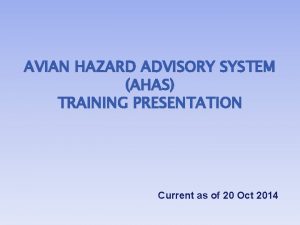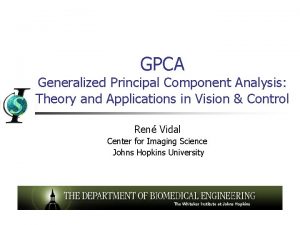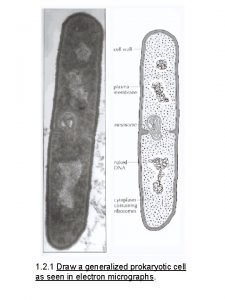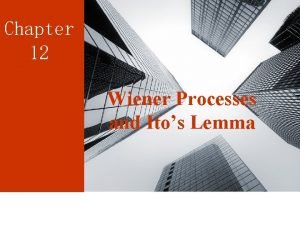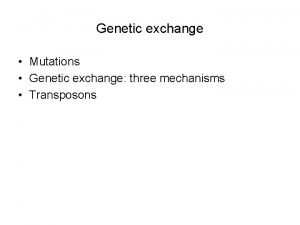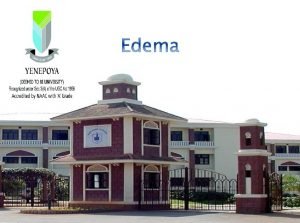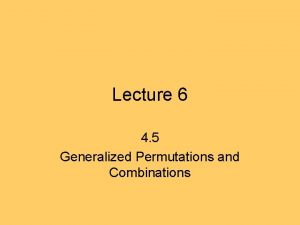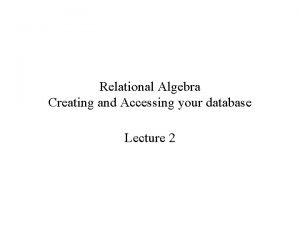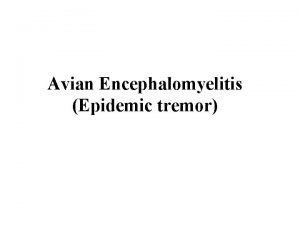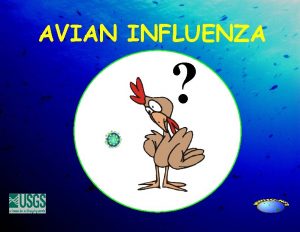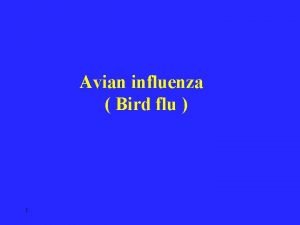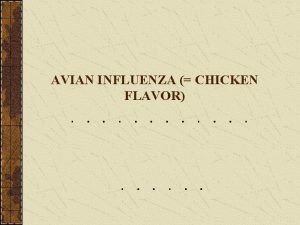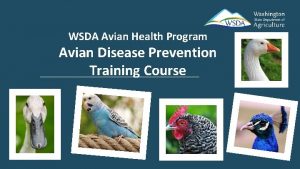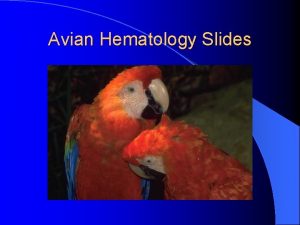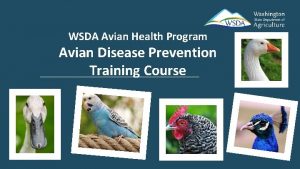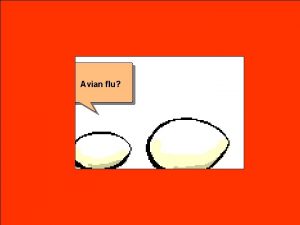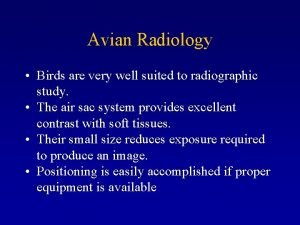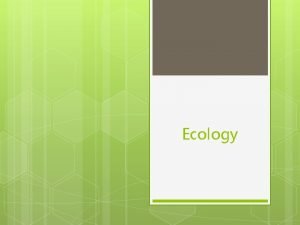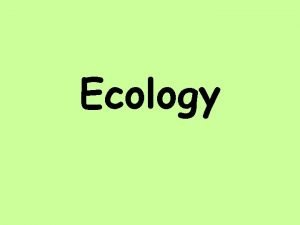AVIAN ECOLOGY VERY GENERALIZED AVIAN ECOLOGY Jodie M

































- Slides: 33

AVIAN ECOLOGY – VERY GENERALIZED

AVIAN ECOLOGY Jodie M. Jawor, Ph. D. § Avian Biology § Behavioral Endocrinology § Avian Endocrinology § Email: jjawor@nmsu. edu § If you have questions later feel free to email me Lots of field work in my past with the fellow above, but some other species as well

EVOLUTION, ECOLOGY, AND DIVERSITY OF BIRDS

AVIAN EVOLUTION Birds are related to reptiles and most put them in with the reptiles Initial ancestors develop in the Mesozoic era More diversification in the Tertiary § Cretaceous-Tertiary extinction event

THE DIVERSITY OF BIRDS As a group we see great diversity � 300 billion birds � 32 Orders (some disagree) � 9702 Species (at least, probably more) European Goldfinch (Carduelis carduelis)

THE DIVERSITY OF BIRDS Basic characteristics of birds § Bipedal vertebrates § Endotherms § Serious adaptations for this § Flight § Serious adaptations for this § Feathers § Big part of the endothermy and they are flight

THE DIVERSITY OF BIRDS Birds occupy a wide range of habitats and are in a large number of niches

THE DIVERSITY OF BIRDS

BIRDS IN THE ENVIRONMENT Kingfisher (I cannot tell what species) diving into water after a fish Birds are found in all environments Physiological adaptations for exploiting these Behavioral adaptations for exploiting these Massive impact on environments they are in

BIRDS IN THE ENVIRONMENT Birds eat everything

BIRDS IN THE ENVIRONMENT

FEEDING ADAPTATIONS Feeding is a big deal Avian metabolism is high, fat storage is low Bill/beak § Multiple adaptations for different feeding styles § Lack of teeth in bill leads to unique digestive structures § Selection for weight savings Hummingbirds (here Ruby-throated Hummingbirds, Archilochus colubris) a plethora of adaptations for unique resource use

FEEDING ADAPTATIONS Adaptation and diversity in bill morphology among shore birds

FEEDING ADAPTATIONS Diversity and adaptation in hummingbird bills

FLIGHT ADAPTATIONS Physical adaptations for flight intense § Reduction in bone mass, reduction in internal organs, reduction/redistribution of muscle mass § Feathers! Physiological adaptations for flight intense § Endothermy a huge help § Metabolism is high § Heart rate, blood pressure, heart volume, lung volume, ventilation – all altered for flight Advantages of flight § More efficient than walking/running § Allows one to exploit some very unique habitats

FLIGHT ADAPTATIONS

FLIGHT ADAPTATIONS While flight is not a unique characteristic, many of the adaptations for flight are quite unique in this group

FEATHERS Pyrrhuloxia (Cardinalis sinuatus), I’m showing off his underwing colors Feathers are protein, poor diet during molt can cause issues Some feather pigments are diet derived Disease can also cause issues with pigmentation

FEATHERS

Annual Cycles Annual cycle for a Mallard (Anas platyrhynchos) but this could be for most any species

REPRODUCTION Yellow-billed cuckoo nest that has been parasitized. This only happens in cicada outbreak years in N. America

REPRODUCTION Most species are seasonal breeders § Annual change in hormones and physiology No species retains eggs through entire incubation process Building nests

REPRODUCTION Like feeding the ways this is expressed is legion § § § Social or genetic monogamy Polyandry Polygynandry Nest parasites (obligate or opportunistic) How individuals breed is also quite varied § Cooperative breeders § Colonial breeders § Solitary breeders All are producing eggs, incubating them, usually caring for offspring (bi- or uniparental), making nests and defending them

Birds nest in a wide variety of areas and use a multitude of resources for nests. Some species have very specific requirements for nesting and are reliant on others for those.

NESTS - ARTIFICIAL Some species will readily accept man-made cavitities

REPRODUCTION Precocial development Altricial development

SOCIAL BEHAVIOR Territory distribution of Northern Cardinals (Cardinalis cardinalis) at Aullwood Audubon Center, Dayton, OH Typical song posture of a male cardinal

MIGRATION Many bird species move from breeding to non-breeding grounds § Year-round activity § There’s one species that hibernates Migration patterns and distances can vary

MIGRATION Migration routes for shorebirds and stopover sites (squares, circles, or triangles) for shorebirds

MIGRATION Here satellite is used to track one specific Osprey (Pandion haliaetus) on migration

MIGRATION European Robin (Erithacus rubecula) Clearly there are major costs involved here, why do this?

MIGRATION While migrating: § Adequate preparation § Stop over sites § Overwinter sites § Staging areas Migration moves more than birds § Disease, parasites

THINGS TO THINK ABOUT In Restoration Ecology birds are going to have an important role to play Often some of the first exploiters of new habitat (flight) Many species are generalists in what they need food and nesting wise Some species are very specialized in their needs Many species migrate and there are special needs around this Reproductive requirements with respects to territory sizes, and available mates (what sort of mating system) Birds are predators and prey, they are pollinators, germinators, and seed dispersers, they are scavengers and hoarders
 Jodie dowd
Jodie dowd Jodie singer
Jodie singer Jodie fuster
Jodie fuster Ayso region 154
Ayso region 154 Jodie farrar
Jodie farrar What does gwv mean in scentsy
What does gwv mean in scentsy Jodie shaw page 3
Jodie shaw page 3 Jodie riley
Jodie riley Very little or very few
Very little or very few Is a very shallow skillet with very short sloping sides
Is a very shallow skillet with very short sloping sides Figure 10
Figure 10 Quantifiers for milk
Quantifiers for milk Multiplication of scientific notation
Multiplication of scientific notation Chordata aves
Chordata aves Swine digestive system
Swine digestive system Ahas birds
Ahas birds Dinosauria
Dinosauria Porter novelli healthstyles survey
Porter novelli healthstyles survey Avian taxonomy
Avian taxonomy Bird digestive system functions
Bird digestive system functions Low pathogenic avian influenza
Low pathogenic avian influenza Similar sire similar scion
Similar sire similar scion Dispersal definition
Dispersal definition Ahas birds
Ahas birds Generalized principal component analysis
Generalized principal component analysis Maxim of relation
Maxim of relation Generalized prokaryotic cell
Generalized prokaryotic cell Ito lemma example
Ito lemma example Generalized transduction
Generalized transduction What is auditing around the computer
What is auditing around the computer Examples of generalized anxiety disorder
Examples of generalized anxiety disorder Enlist nursing responsibilities for generalized edema
Enlist nursing responsibilities for generalized edema Generalized permutations and combinations
Generalized permutations and combinations Relational algebra insert
Relational algebra insert
